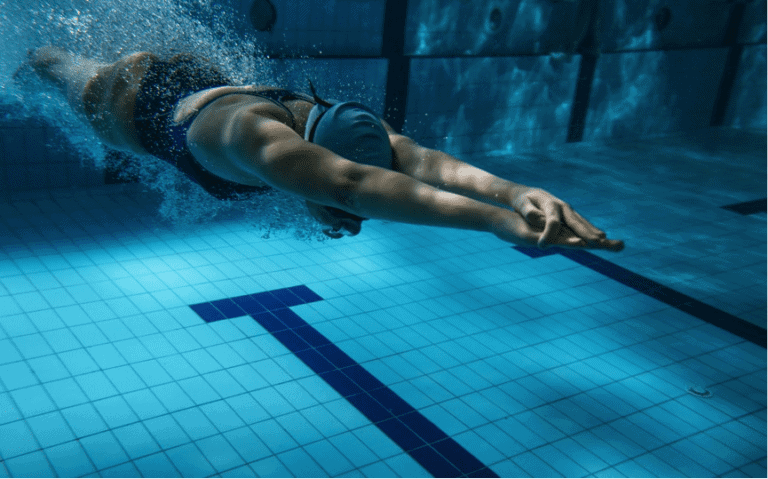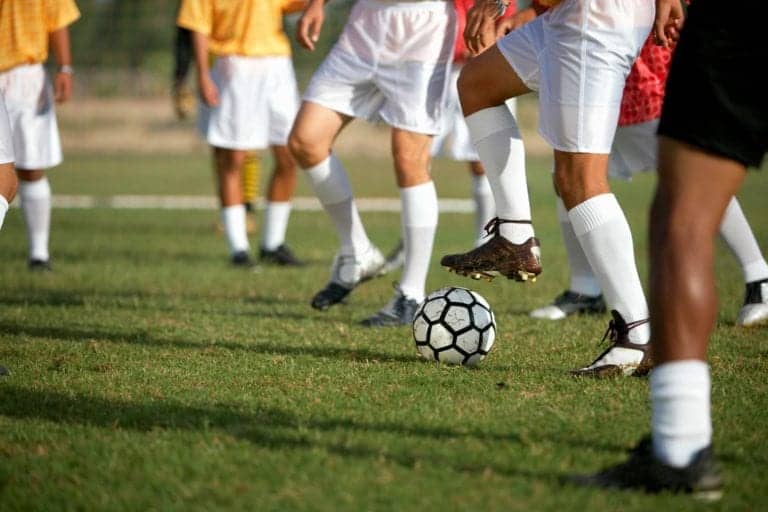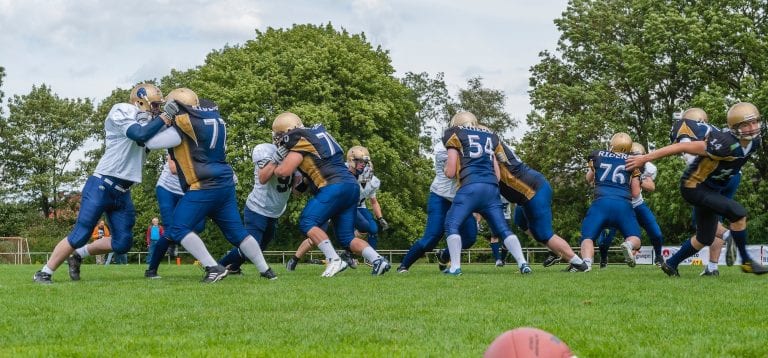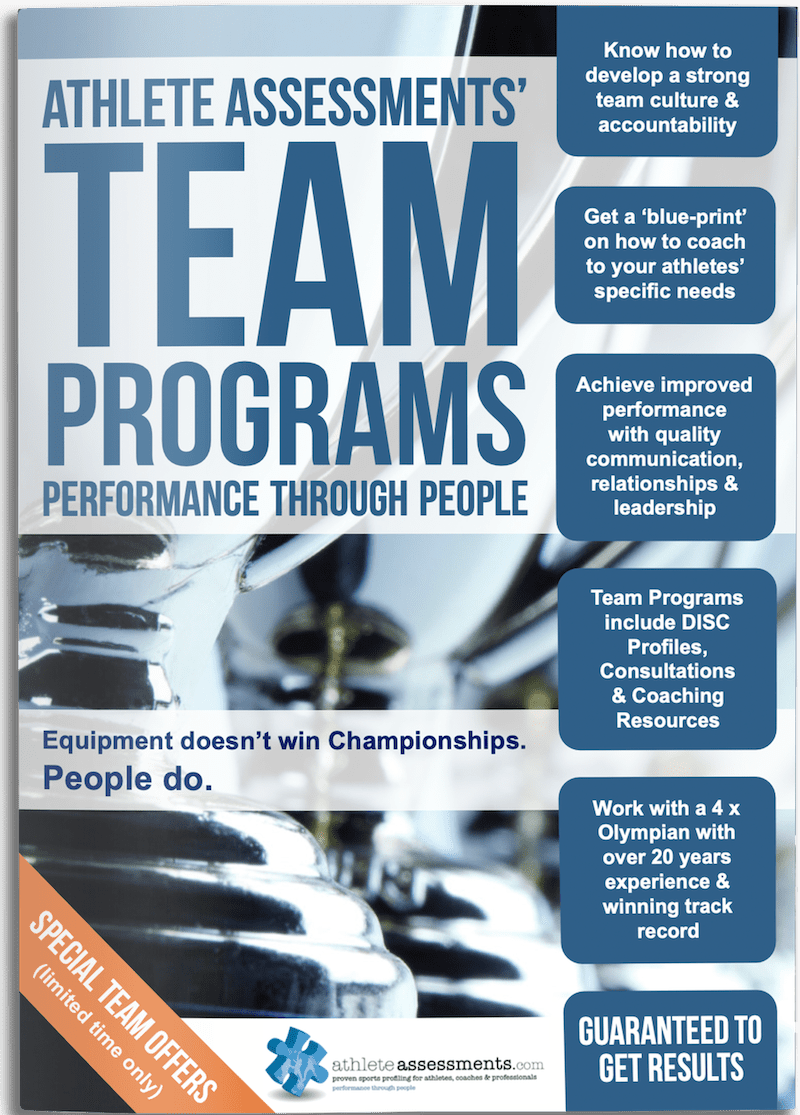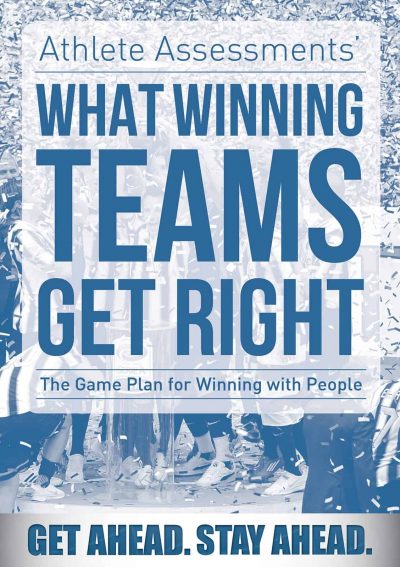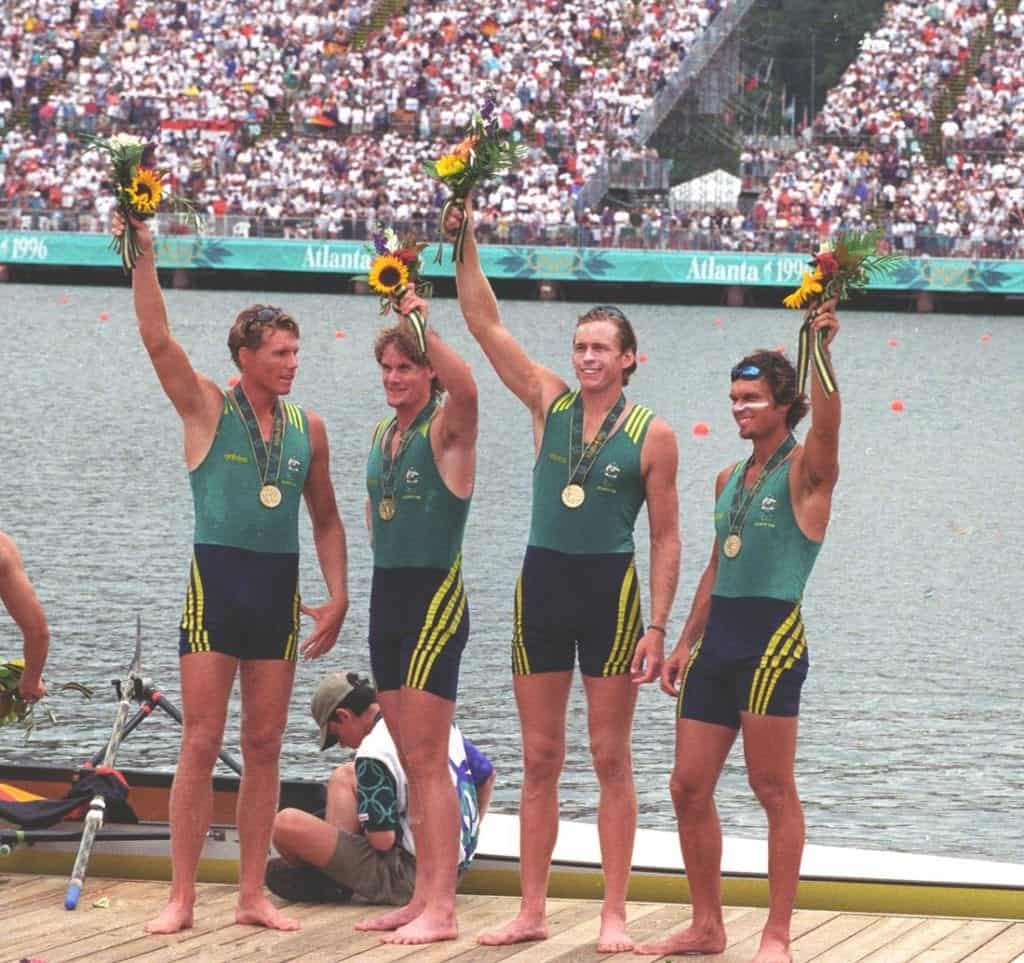Ask any successful business person or entrepreneur what makes their business so powerful and most respond with some variation of the theme, ‘selection of their people’. Even ask couples with enduring and loving relationships, what makes them so happy together and they often say ‘tremendous selection’! Sport is no different. Ask any of the coaching greats what makes the most successful team and almost without exception their immediate response is ‘selection’. Selection is the fabric or building block to exceptional results on and off the field.
So is achieving ‘perfect’ selection, the Holy Grail of sport? That is likely debatable, in the end, getting it right (or as close to ‘right’ as possible), makes a significant impact on your results. It also creates a more rewarding and enjoyable experience for your athletes and you as a coach!
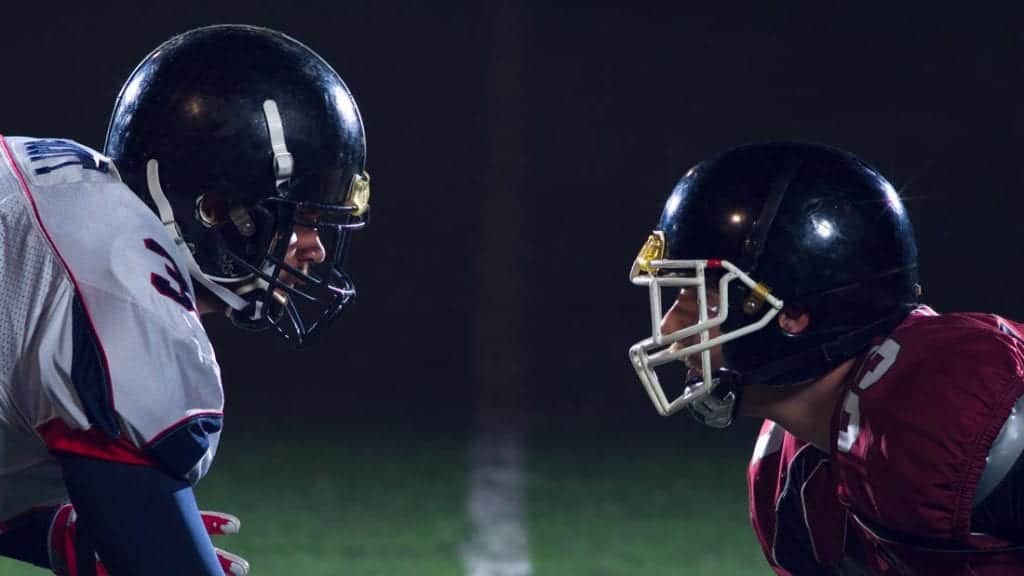
(Please note that when we talk about team selection, do not exclude yourself entirely from this conversation if you are an individual athlete coach. Team selection boundaries cross into squad dynamics too. Also, before we start, there is no way we can do this topic justice in a few pages, however we have done our best to cover what we believe are the key elements and often the critical areas that can be overlooked or rushed over.)
Whilst canvassing the various points of view on team selection, one point of commonality was the degree to which all agreed, team selection can make or break your season. Starting with the “right” athletes is a fundamental component of eventual success. When I ask coaches and selection committees how they select their teams, they usually launch into a detailed description of an analysis of the physical and technical aspects of the perfect team for their sport and then how to identify that in potential athletes to take those spots. A vast majority of their time and effort is focused on the physical aspects of the athletes and what is needed from a technical skill or physical capability for each position in the team. This is across sports from rowing to track & field to the various codes of football, it is a constant and recurring approach.
In this article we propose a methodology for best practice team selection which you can apply to your sport. It incorporates both the physical and technical aspects of your sport as well as the ‘other’ elements that make an extraordinary team. Before we proceed on the topic of team selection, there is a critical element we must consider first and that is the ‘culture’ of your team or squad.
Team Culture - Define Before Selection
Much has been written about culture in the world of business. In our sporting world, culture is gaining more acceptance as one of the most important factors to “get right” if we are to enjoy a successful season.
A successful season from our perspective means your athletes perform to their best ability and play in games or race as well as their best training sessions; there is wonderful team chemistry; the off-field behavior of your athletes is that which is becoming of a role model; and each athlete on the team genuinely is making a positive contribution to society. Note that by our measure, a successful season is not a measurement of the win-loss record. Whether you win or not is only partly in your control. What you can control entirely is your approach to the game (and your sport) and honoring it with your best efforts 100% of the time.
Culture is a measure of the behaviors your team and organization promotes and accepts. Ultimately culture is best defined simply as “the way we do things (behave) around here”. What are your team’s standards? What is and is not acceptable behavior on and off the field? Once you understand the type of culture you have and the type of culture you want, then you are in a position to begin to select athletes who you trust can add value to this culture. There may also be some more challenging decisions to be made as the selection criteria are not only on their ‘sporting ability’. This may actually result in an athlete who is an excellent player, not become part of your team because they do not add value or “fit” with the culture you either have or want to have.
Watch Bo Hanson present on the Importance of Team Culture and Identity in Sport.
The type of culture you are to strive for is also determined by the quality of the results on and off the field, your team is hoping to achieve. In practice, if your team and organization’s expectations are to be the best in the competition, then how you behave in every aspect of your sport must reflect this goal.
If you don’t spend time upfront identifying exactly what you want for the team you may risk ending up with a group of athletes who aren’t able or aren’t willing to deliver what you are aiming for. In a way, it is like goal setting. Unless you set your own goals, you will end up part of someone else’s goals.
When you articulate exactly what you want, you have deliberate and considered criteria against which to select athletes. This puts you in the driver’s seat. The criteria you develop includes the very important technical aspects of positions on the team as well as values, behaviors, how others will view (and talk about) you and what is important to your sporting organization.
Putting this together on a one page summary is also useful. You can use it as your own guide during selection as a reminder of the ultimate goal, you can use it to share your vision with potential athletes and it can even be a ‘sales document’ to attract the best athletes. It also provides a consistent message to share within your coaching team, club, sporting organization or college.
As a coach, you are to create the initial vision of the type of culture you want your team to have. Once you have defined this, then you are in a position to select athletes who are more likely to be able to behave in accordance to this.
Key Questions in Selecting Athletes
When selecting athletes the following considerations are likely to be useful for you.
- Can this athlete perform from a physical and technical perspective in the position I need them to (or have the potential to with your coaching)?
- Are they willing and able to contribute to the team, beyond their physical and technical role?
- Is this athlete willing and able to perform their role for the entire season (and longer term)?
- How does that team come together – what does the ‘team dynamics’ look like?
- How do I be the best coach for the team (and individuals within the team)?
Now let’s look at each of these in more detail.
1. Can this athlete perform from a physical and technical perspective in the position I need them to?
This first step is usually very well developed and documented in most sports. This involves having a ‘role description’ for the physical and technical aspects of each position on the team and matching potential athletes to these demands. For example, if I am selecting a “half-back” in a Rugby League team, can my desired half back perform according to the demands of this unique role? Yes or no. If yes then proceed to the next question. If no, start looking again.
As an expert in your own sport you very likely already have volumes of information about this, so I won’t re-invent the wheel here.
2. Are they willing and able to contribute to their team, beyond their physical and technical role?
What we are focusing on is whether you as the coach, believe the athlete can “fit” the culture you believe is required to be successful. Is this athlete able to make a contribution in line with the behaviors you as their coach, believe will be required to achieve the team’s goals this season (this is likely to be behaviors not related to their physical and technical capability)?
Despite the lure to focus on merely the physical and technical aspects of the positions on the team, one of the most critical questions to ask of a potential team member is their willingness to contribute to their team, beyond their technical role. Is this team member willing to make a contribution which adds value to their team on and off the field in the following ways (as an example, you will have your own list):
- Will they encourage others?
- Will they offer constructive advice and support to improve their team members?
- Will they assist in certain logistical team preparations?
- Will they do their fair share of the “small jobs” such as carry water bottles, prepare for training, and clean up after the team?
- Will they communicate positively on the field, court, in the water or in the boat?
- Are they the type of athlete who puts the team first and their ego in their back pocket?
In selecting athletes, the non-technical roles you want them to play are partly described in the cultural behaviors you defined pre-selection. To judge if an athlete is willing and able to play the non-technical role means meeting with them face to face and asking them to describe times when they have actually played these roles in other teams. If they cannot describe a time, they either have never done it, or they simply do not understand the concept of team and it may be your role as coach to develop this understanding within them. You must then decide if you are capable of doing this and have the time (without jeopardizing another aspect of your coaching).
To select an athlete who is not able to perform a non-technical role which underpins the culture of your team means you are highly likely to undermine your chances of achieving the team’s goals for this season. You may even begin to jeopardize the future culture by the perceptions others in and outside of the team will label your team with. This is not to say some teams don’t suffer from this. There are lots of examples of teams with this issue impacting their performances.
The list of potential non-technical roles is endless. high-performance teams cover these roles without exception. Only when this happens does the concept of synergy begin to be realized as the sum of the parts adds up to more.
For more on non-technical roles we highly recommend our dedicated articles on “Players’ Value Beyond Their Technical Positions” and “Critical Team Roles in Sport”
3. Is this athlete willing and able to perform their role for the entire season?
This covers both of the two previous questions. We have seen the implications of athletes selected for a role who during the season begin to get bored with the position and start wanting to play another role. This costs the team significantly. Or it could be their willingness and ability to perform their non-technical role within the team over the longer term. Will they continue to contribute to the team in all of the areas you focused on in question 2 above? This is yet another judgment call you have to make, but it does deserve strong consideration.
If you have established the selected athlete is willing and able to perform their role for the entirety of the season, the next question we are to ask is…
4. How does that team come together – what does the ‘team dynamics’ look like?
“On paper” how well do you envision this team collaborating. Great team chemistry is hard to describe but you definitely know when you’ve got it and when you don’t. The challenge is about creating it on demand, not by chance. Often, athletes compete brutally against each other in order to be selected on the team. Then, once on the team, they are expected to put the team first. This is quite a departure from their previous thinking when they had to fight for themselves.
However, if the athletes’ thinking does not change after selection, we end up with a non-united team – a team of individuals. A team, without question, fails to produce their best when it matters the most. Great teamwork chemistry happens when those on the team have a philosophy of being the best person for the team rather than the best person on the team.
Read our article dedicated to Understanding Team Dynamics- Using DISC to create high-performance Teams.
To achieve great team chemistry, every coach has to understand the interplay of behavioral styles / personalities existing on their team. This interplay is called Team Dynamics. Simply by observing a team, it can be quite a challenge to accurately understand the diverse mix of these personalities and styles. You need to master this sooner rather than later. (This is where we can assist you – Athlete Assessments help coaches understand their individual athletes using the AthleteDISC profiles and the additional capabilities available through our Team Dynamics Profiling tool.)
Why is this so important? Well, most teams fail due to clashes of behavior patterns (“personality clashes”). Clashes that could have been managed had the coach and team been aware of them and planned accordingly.
You can’t risk or assume any group of people can automatically be a team. One of the biggest single reasons that teams misfire, is personality differences are ignored. In short, who’s selected on the team affects the team’s outcome. For best results, consider what their behavioral style is and what the outcome of these behavioral styles is in creating the Team Dynamics Profile. With this knowledge coaches can begin to understand likely team behaviors and the most effective way to coach the overall team. Coaches can also see where gaps are in the team’s diversity and can, where able and appropriate, recruit athletes of particular profiles to fill those gaps.
We actually don’t recommend using the AthleteDISC profiles as a selection tool on their own. We do however highly recommend using it to understand your athletes and to understand the team dynamics. With this information you are best placed to be the best coach for this team.
5. How do you be the best coach for the team?
Coaching a team is far more challenging than coaching a group of individual athletes. To coach a team effectively, coaches must be aware of the nature of the interdependencies within the team.
- Whose strength overcomes another’s limitation?
- How can the team work as a unit to improve the individuals within it?
- How do I as a coach, tailor my coaching style to suit the whole and still meet the needs of the individual?
There is no short answer to this, other than to say that your coaching philosophy must reflect the need to be able to be flexible with your coaching style and to recognize that to coach each individual means being able to individually build quality relationships with each team member. Based on the quality of the relationship and the degree to which you can appreciate the individual differences for each athlete, will be a determining factor in whether you are able to build individual engagement within the team.
A very important “reconciliation” to make in selecting the team is do you have all that your athletes need? Some athletes may need specific coaching to get them to the level that will make the team successful. If this is in addition to what you have time and resources to provide, how are you going to fulfill this role? This is also where you need to recall any ‘compromises’ you made in the first few questions of selection. If you selected someone with a strong ability to fulfill the their physical and technical aspects of their role on the team, but who will need additional support and coaching on fulfilling their non-technical contribution to the team, have you allowed the time and resources to overcome this. You may see the opportunity to include what we call ‘project athletes’ – the ones you know have tremendous potential, but need proportionately more time and resources to develop. Ensure you don’t have too many of these in your team, otherwise you’ll be physically, mentally and emotionally exhausted by season end.
Final Assessment of Team Selection
I believe the final aspect of team selection, deals with testing the behavioral output of your desired team. To do this, over the space of a week potential team members are assessed according to their technical role and non-technical role and given feedback as to how they perform. This gives them the opportunity to step up to their role or opt out of it given the expectations the culture you are attempting to develop is placing on them. This final act of evaluation creates accountability and says to each athlete, culture is critical. As well, it places culture in the ultimate hands of those whose behaviors shape it (this also includes and often starts with the coaching staff which should be part of a similar selection and evaluation process).
Ultimately team selection is not simple. For decades business has attempted to define and shape their desired culture and recruit people who best fit this. Companies such as Virgin and Google are well known for recruiting for the right attitude, people who naturally fit into the organization or are able to make slight adjustments in order to be a great fit and make a massive contribution. A company’s survival depends on this. As a coach you also are in the same position, often your survival depends on the culture you envisage, create and engage others in being accountable for every day, on and off the field.
Where to from here?
While a great coach can do amazing things with a mediocre team and a mediocre coach can achieve phenomenal results with an exceptional team, imagine combining outstanding coaching with a well select team. That is where the coaching greats emerge!
So when you next commence team selection, start early and invest your time wisely. Upfront articulate exactly what you want, who can do it, how they will all come together as a team and what you need to do to bring out their best as a team and as individual athletes.
If you would like more information on any of the topics discussed today you may find the articles linked below valuable. For more great articles, read on within the Videos & Articles section of our website.
At Athlete Assessments, we’re here to provide you with excellence in service and here to help you be your best. If there is anything we can assist you with, please Contact Us.
Recommended Articles
As we all know, our personality impacts our behavior and as such has a direct impact on our coaching style. However, unlike personality, which is relatively stable, a coach’s style is a preferred pattern of behavior and as such it can be changed or adapted depending on the situation. Most of all though, a coach’s style can be changed or adapted if they are aware of their style preference and what style will give them the results they need.
Trust can be built through developing an understanding of one another and their position within the team. When we talk about team roles, we look at both technical and non-technical roles as being equally critical to a team’s success. While technical roles are the position an athlete plays on the field, non-technical roles refer to how the athletes make (or don’t make) a contribution to the team beyond their technical position.
Video Presentation by Bo Hanson, 4x Olympian and Coaching ConsultantThe perfect team chemistry is what everyone is searching for in any team or squad environment to achieve the top performances in sport. Watch this video as…
When you look at the athletes in your squad or team, what do you see? Do you just see the number on their back? Do you see their technical ability, and how this translates into their performance? Is there anything an athlete can contribute beyond their technical contribution? Have you ever thought about the impact certain players have on the rest of their team, especially when they are not there?
In a team it can be difficult to understand why tension can develop between some athletes, yet other athletes gel from start. In this article we discuss the team tension between the different DISC styles in a team environment, due to their different priorities in pace and relationships.


